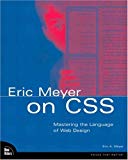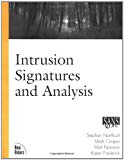Cringley really does have a good outlook on the industry. He says a a few things I had already figured out, and a few things that I responded to with an “oh yeh!”
Now the premise of the campaign may gloss over some details, but I think this is a well intentioned and certainly well executed campaign.
Desktop patterns that will make your eyes blead. I find this very amusing.
Spammers rate pretty damn low on my list. Telemarketers are even worse. But this evening I have come across a group of slime that makes spammers and telemarketers look like Ghandi; people who try to send you faxes at 11:45pm. I am now very awake, and very pissed off.
If I could find them, I would be using my Louisville Slugger to good effect.
I have said in the past that I am leary of horror stories regarding freedom and invasion of privacy. (Not that I am not concerned about those topics, my letters to my Senators and Congresswoman as well as my money to the ACLU should prove that.) But here is a story by a person I doubt is lying. And it is very funny to boot.
 To put it simply, this is an amazing book by an even more amazing author. The foreword expresses my feelings that everyone needs their own personal Eric Meyer to call upon, but this book makes a close second.
This book is not a tutorial on the intricacies of CSS (if you are looking for that, look to some of the other books that Eric has written). This book offers case studies on implementing different web projects using CSS. He covers topics ranging from conversion of existing HTML layouts to pushing the boundaries of CSS to do things never before possible with simple HTML.
To put it simply, this is an amazing book by an even more amazing author. The foreword expresses my feelings that everyone needs their own personal Eric Meyer to call upon, but this book makes a close second.
This book is not a tutorial on the intricacies of CSS (if you are looking for that, look to some of the other books that Eric has written). This book offers case studies on implementing different web projects using CSS. He covers topics ranging from conversion of existing HTML layouts to pushing the boundaries of CSS to do things never before possible with simple HTML.
His presentation is clear and brings you through his thought process step by step. The book has great full-color images that illustrate key steps along the way so that you can understand the process more clearly. The projects he uses will provide a starting point for most basic web design problems.
In addition to the overall benefit provided by his examples, Eric Meyer’s use of all aspects of CSS will certainly teach you things you have not known before. I learned several constructs that I never knew I could do before seeing them in use in the book. I also appreciated his presentation of print stylesheets; something I have only seen mentioned briefly in other places.
A great book, well worth reading.
Now that most people have seen The Two Towers and have either enjoyed or cringed throughout the movie, I think it is time to make predictions as to how Peter Jackson will deviate from the books in The Return of the King.
Read on for mine.
- The scene where Gollum throws the ring into the fire will be considered too anti-climatic and will be replaced by Frodo fighting sword to sword with Sauron in Mt. Doom. Frodo will fly around the screen like Yoda in Episode II.
- Arwen will show up at the battle for Minas Tirith and kill the Nazgul saving Aragorn’s life.
- Treebeard and the Ents also fight at Minas Tirith.
- Aragorn fights Faramir for the crown of Gondor. Eowyn throws herself into the battle and is mortally wounded only to be saved by Aragorn. Faramir then accepts Aragorn as his lord and they all become friends.
That is enough for now. Add your predictions. Be creative!
 First off, a little bit of a warning; this is not a book to be picked up lightly to get an overview of IDS systems. It is a book that requires you to have a good understanding of IDS technology as well as a very good grasp on the fundamentals of the IP, TCP, and UDP protocols. If you do not meet those conditions, I am afraid this book will do nothing but hurt your head.
Assuming you have made it this far, it is a very interesting book (although it may still make your head hurt). It is geared towards someone looking to take one of the GIAC exams on network security (a fact that is not mentioned obviously). It uses a model of presenting the reader with events recorded on IDS systems in the wild and presenting the anylsis in a consistent manner. The examples used in the book were culled from the answers given in the exams for the GIAC Intrusion Detection Professional Certification. It divides the network traces into groups from “Network Mapping” to “Exploits” to “Out of Spec Packets.”
First off, a little bit of a warning; this is not a book to be picked up lightly to get an overview of IDS systems. It is a book that requires you to have a good understanding of IDS technology as well as a very good grasp on the fundamentals of the IP, TCP, and UDP protocols. If you do not meet those conditions, I am afraid this book will do nothing but hurt your head.
Assuming you have made it this far, it is a very interesting book (although it may still make your head hurt). It is geared towards someone looking to take one of the GIAC exams on network security (a fact that is not mentioned obviously). It uses a model of presenting the reader with events recorded on IDS systems in the wild and presenting the anylsis in a consistent manner. The examples used in the book were culled from the answers given in the exams for the GIAC Intrusion Detection Professional Certification. It divides the network traces into groups from “Network Mapping” to “Exploits” to “Out of Spec Packets.”
I found the range of topics to cover the full spectrum of incidents a network security analyst will encounter. The method of presentation became lightly tedious as I worked through all of the examples and some of the analysis seemed a little lacking in depth. I would have preferred a little more background and analysis on the traces than was often given.
But even with those criticisms, I found the book very educational. It gives a solid methodology to follow in analyzing events on your own network as well as offering examples of many common (and some not so common) network traces.
Did Peter Jackson even read the fucking book? Elves in Helms Deep? Ents say “screw the rest of the world” then tricked by a freaking hobbit into getting involved? Faramir captures Frodo and Sam and drags them to Osgiliath? Changing “Samwise the stout-hearted” to “Samwise the brave?” I think even Americans can handle the term stout-hearted.
Jesus H. Christ. It was a good movie, great cinematography, but it wasn’t The Two Towers.
I just have no comment.